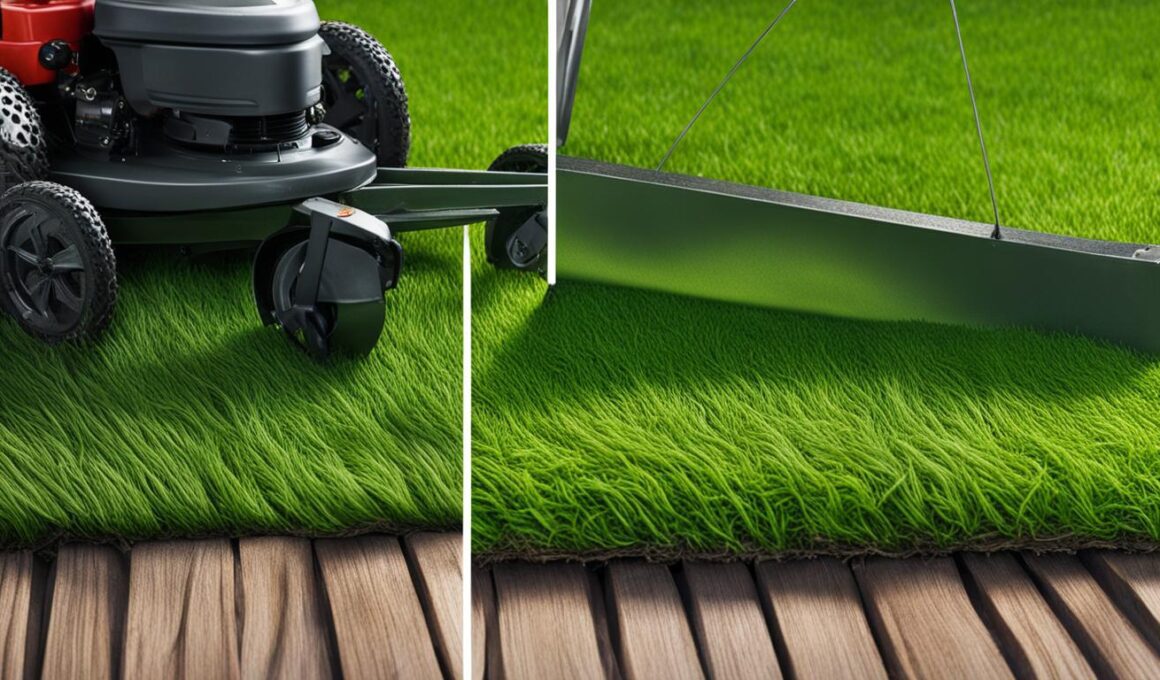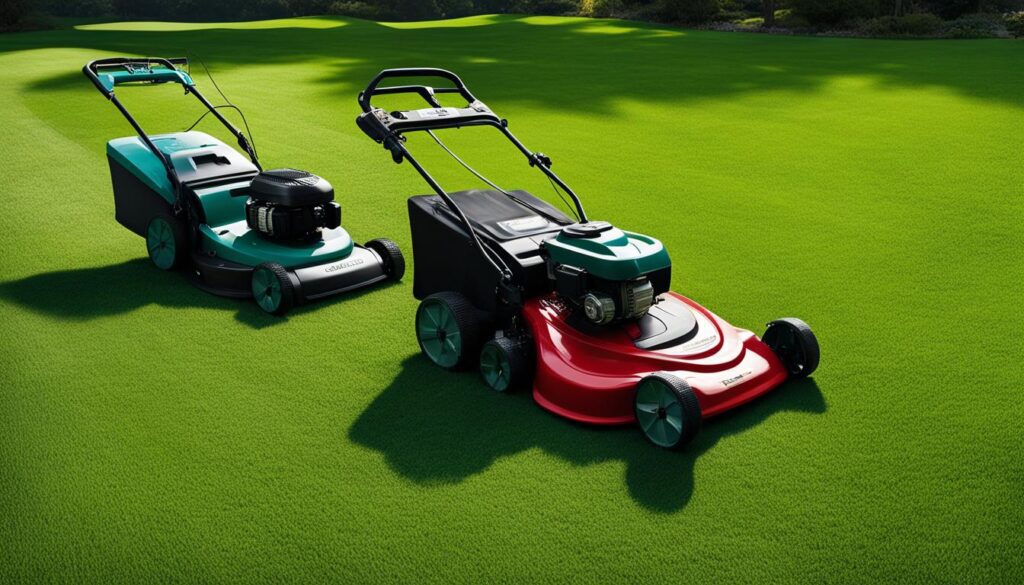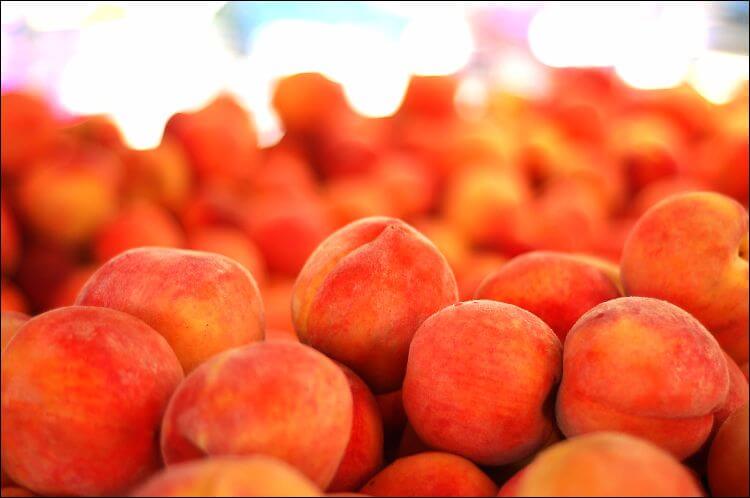As a lawn owner, you may have faced the inevitable decision between mulching blades and regular lawn mower blades. Selecting the right blade type for your mower can greatly impact lawn care, cutting grass, lawn mower maintenance, and eco-friendly lawn maintenance. To make an informed decision, it’s crucial to understand the abilities of each blade type and how they fit the specific needs of your lawn. Factors to consider include the desire for a cleaner looking lawn, mowing frequency, environmental impacts of grass mulching, and lawn fertilization.
Key Takeaways
- Regular blades, or 2-in-1 high-lift blades, are designed for effective grass cutting and discharge, ideal for bagging clippings and maintaining a clean lawn.
- Mulching blades, also known as 3-in-1 blades, feature curved cutting edges that chop grass clippings finely and redistribute them onto the lawn, acting as a natural fertilizer.
- The choice between mulching and regular blades depends on individual lawn care goals, mowing habits, and environmental considerations.
- Regular blades are ideal for less frequent mowing or bagging clippings, while mulching blades are best for eco-friendly, nutrient recycling lawn care.
- Both mulching and regular blades have their advantages; consider mower model compatibility and specific lawn characteristics when making a decision.
Understanding the Basics: What Are Mulching and Regular Blades?
When it comes to properly caring for your lawn, choosing the right blade for your lawn mower is crucial. There are two main types of blades: standard blades, also known as high-lift or 2-in-1 blades and mulching blades, commonly referred to as 3-in-1 blades. Understanding the differences between these two blade types is essential for making an informed decision as each offers unique benefits for your lawn care routine.
Defining Standard Lawn Mower Blades
Standard blades, often referred to as high-lift or 2-in-1 blades, are designed to cut grass efficiently and facilitate the discharge or bagging of the clippings. These blades are crafted to be as straight and aerodynamic as possible, generating a powerful lift to expel grass from under the mower deck. This design makes standard blades suitable for bagging clippings and maintaining a cleaner lawn appearance, especially for lawns that are not mowed frequently and might be prone to clumping and clogging.
Exploring the Design and Function of Mulching Blades
In contrast, mulching blades are uniquely designed with curves and multiple cutting edges. These features allow mulching blades to not only cut the grass but also finely chop the clippings and redistribute them back onto the lawn. The smaller clippings decompose more quickly, returning nutrients to the soil and acting as a natural fertilizer. This nutrient recycling process contributes to sustainable lawn care practices. However, mulching blades do not generate the same lift or discharge force as standard blades and can be less efficient if the grass is overgrown.
Here is a comparison of the main characteristics of standard and mulching blades:
| Blade Type | Design | Primary Function | Discharge Efficiency | Bagging Efficiency |
|---|---|---|---|---|
| Standard Blades (High-Lift or 2-in-1 Blades) | Straight, Aerodynamic | Grass Cutting and Discharge or Bagging | High | High |
| Mulching Blades (3-in-1 Blades) | Curved, Multiple Cutting Edges | Grass Cutting, Chopping, and Redistribution | Low | Medium |
While both standard and mulching blades are designed to improve the overall health and appearance of your lawn, each has distinct advantages and disadvantages. Therefore, choosing the right blade type depends on your lawn care goals, mowing habits, and the specific needs of your lawn.
The Benefits of Standard Blades for Lawn Care
Standard blades, commonly known as high lift mowing blades, offer numerous advantages to the lawn owner concerned with maintaining a neat and visually appealing lawn. Understanding these benefits can help you make an informed decision about whether these mowing blades are the right choice for your lawn care needs.
- Clean Lawn Cut: Standard blades provide a cleaner cut across a lawn, contributing to an aesthetically pleasing appearance. They efficiently cut grass to create an even and well-manicured lawn.
- Effective Bagging: The aerodynamic design of standard blades helps generate the required lift to facilitate efficient bagging of lawn clippings, preventing them from scattering across the lawn.
- Lawn Clipping Disposal: High lift mowing blades excel in disposing of grass clippings through expelling them out from beneath the mower deck or into a bag, ensuring clippings are effectively managed.
- Removal of Leaves and Debris: In addition to cutting grass, standard blades help remove leaves and other debris, making them particularly suitable for less frequent mowing or seasonal cleanups.
Standard blades are designed to optimize these advantages for users who prioritize a visually pleasing and debris-free lawn. The table below offers a comparison of the attributes of high lift mowing blades and mulching blades, highlighting the aspects in which standard blades excel.
| Attributes | Standard Blades | Mulching Blades |
|---|---|---|
| Clean Cut | Excellent | Good |
| Bagging Efficiency | High | Low |
| Clipping Disposal | Efficient | Less Efficient |
| Leaf and Debris Removal | Effective | Less Effective |
In conclusion, if you prefer a tidy lawn with efficient lawn clipping disposal and effective bagging, standard blades are an excellent choice. By understanding the advantages of high lift mowing blades, you can determine if they align with your lawn care priorities and make an informed decision about the best blade type for your specific needs.
Mulching Blades: Eco-Friendly Lawn Maintenance
While regular blades offer a clean and sleek look to your lawn, mulching blades provide a more sustainable method of lawn maintenance, catering to those prioritizing eco-friendliness and soil health. Mulching blades not only cut grass but also contribute to efficient grass cycling, resulting in nutritious and organic lawn care.
How Mulching Blades Promote a Healthier Lawn
Eco-friendly mulching blades are designed to maximize nutrient recycling by finely chopping grass clippings and returning them to the soil. As leaves and grass decompose, they release stored nutrients back into the ground, effectively feeding your lawn without the need for chemical fertilizers. This approach furthers sustainable lawn maintenance and fosters a healthier ecosystem.
To achieve optimal results with mulching blades, it’s essential to mow your lawn regularly and avoid letting the grass grow too tall, to prevent clogging under the mower deck. Mulching for soil health is ideal for those committed to an eco-conscious lifestyle and wish to improve the overall well-being of their lawns.
- Regular mowing with mulching blades ensures finer grass clippings for efficient decomposition.
- Decomposed clippings return valuable nutrients to the soil, promoting a nutrient-rich lawn.
- This eco-friendly approach helps reduce the need for additional chemical fertilizers.
Mulching blades are not just an environmentally friendly choice, they also provide several benefits to your lawn:
| Benefits | Description |
|---|---|
| Nutrient Recycling | Grass clippings break down quickly, returning vital nutrients to your lawn and reducing the need for chemical fertilizers. |
| Soil Moisture Retention | Decomposing clippings help to retain soil moisture, reducing the need for constant watering and supporting healthy grass growth. |
| Improved Soil Health | Mulching supports a natural, organic ecosystem in your lawn by encouraging the presence of beneficial microorganisms and earthworms. |
By incorporating mulching blades in your lawn care routine, you’re not only nurturing a healthier, more sustainable lawn but also contributing to a greener world through organic lawn care practices.
Performance Comparison: Mulching Blades Vs Regular Blades
When comparing the performance of mulching blades and regular blades, it’s crucial to examine the differences in cutting and discharging efficiency, as well as the effectiveness of each blade when bagging lawn clippings. By understanding these factors, you can make an informed decision on which blade type best suits your lawn care preferences and needs.
Cutting and Discharging Efficiency
Mowing efficiency and clippings discharge are influenced by the design and functionality of the blades. Regular blades, or standard blades, are known for their aerodynamic lift, allowing them to effectively eject grass out of the mower deck. On the other hand, mulching blades focus on re-cutting grass into small pieces for mulching purposes, which can make discharging grass out of the deck less efficient. As a result, regular blades are generally more proficient in cutting and discharging clippings.
Considerations for Bagging Lawn Clippings
When it comes to lawn clipping bagging, your choice between mulching and regular blades can significantly affect the bagging efficiency. To better understand this aspect, let’s delve into a lawn cutting comparison:
| Blade Type | Bagging Efficiency | Notes |
|---|---|---|
| Regular Blades | High | Designed for optimal aerodynamic lift, which makes them more suitable for bagging clippings. |
| Mulching Blades | Medium | Can bag clippings, but may not be the most efficient choice due to less focus on lift and grass discharge. |
As shown in the table, regular blades might be the better option if you prefer bagging lawn clippings, since they are designed with lift and grass discharge in mind. Although mulching blades can be used with baggers, their performance might not be optimal, particularly for mowers with larger decks or complex discharge systems.
For the best results when using mulching blades with baggers, it’s recommended to utilize a mulching kit designed for your specific mower. This will ensure a more effective lawn clipping collection while still providing the benefits of mulching.
Selecting the Appropriate Blade for Your Mowing Needs
Choosing mower blades for your lawn care routine can profoundly impact the quality and health of your lawn. Factors like lawn size, type of grass, and mowing frequency should be considered when selecting the right blade. This guide will discuss the key aspects to consider when making your lawn mower blade selection.
The first step in choosing a suitable blade is evaluating your lawn mowing requirements. Begin by examining the type of grass and climate in which your lawn grows. Additionally, think about how often you mow and whether you prefer to bag your clippings or not. These factors will help you determine if a standard or mulching blade is the best fit for your needs.
Mower blade types play a significant role in custom lawn care. As discussed in previous sections, standard blades excel at neatly cutting grass and effectively bagging or discharging clippings. They are particularly suited to lawns with less frequent mowing and those who prefer to bag clippings for a cleaner lawn appearance.
On the other hand, mulching blades are ideal for those who practice regular mowing and prefer an eco-friendly approach to lawn maintenance. This type of blade chops clippings into tiny particles, which decompose quickly and return valuable nutrients to the soil – naturally fertilizing your lawn without the need for chemical fertilizers.
To further illustrate the differences between standard and mulching blades, consider the following table:
| Standard Blades | Mulching Blades | |
|---|---|---|
| Cutting Efficiency | High | Varies depending on grass height |
| Ideal for Bagging Clippings | Yes | No (unless combined with a mulching kit) |
| Ecological Impact | Low | High |
| Maintenance Requirements | Higher (cleaning, sharpening) | Lower (less frequent cleaning) |
| Best for Lawns with… | Infrequent mowing, desire for clean appearance | Regular mowing, eco-friendly practices |
Before making your final decision, it’s essential to research the compatibility of your desired blade with your mower model. Mower manufacturers often provide specific recommendations for suitable blades – be sure to check the owner’s manual or the manufacturer’s website for guidance.
Taking the time to consider your mowing habits, lawn conditions, and environmental preferences will help ensure that you choose the right mower blade for your unique lawn care needs. In turn, a carefully selected blade can contribute to a healthier, more attractive, and sustainable lawn.
Can Mulching Blades Help in Propagating Haworthia Succulents?
Yes, mulching blades can successfully propagate haworthia succulents by creating ideal conditions for the plants to take root and grow new offshoots. The sharp edges of the mulching blades help to create clean cuts on the succulent leaves, making it easier for them to propagate and thrive.
Conclusion
In the debate between mulching blades and regular blades, the best choice for your lawn depends on your individual lawn care goals, mowing practices, and environmental considerations. Regular blades provide an efficient cut and discharge option for those who prefer to bag their clippings, while mulching blades benefit the lawn’s health and our environment by returning nutrients to the soil through a natural, eco-friendly mowing process.
In order to make an informed lawn mower blades decision, consider how each type of blade aligns with your personal preferences and the specific needs of your lawn. The mower blade comparison should include factors such as performance, cutting designs, grass discharge, and bagging compatibility. By taking these factors into account, you will be able to choose the best mower blade for your lawn and optimize its overall health and appearance.
Remember, no one blade type is inherently superior to the other. It’s about matching the right blade type with your specific lawn care preferences and requirements. By doing so, you can create a tailored solution to achieve the perfect balance of aesthetics, efficiency, and sustainable lawn care.












